Cultural influences
Hallaig is incorporated in the lyrics of The Jacobite Rising, an opera by Peter Maxwell Davies, and can be heard read by MacLean, as part of the song "Hallaig" on Martyn Bennett's album Bothy Culture .
MacLean talked extensively about the poem in Timothy Neat's documentary for RTÉ, Hallaig: the Poetry and Landscape of Sorley MacLean in 1984, for example he analyzed how much traditional Gaelic song influenced him. [4]
The poem inspired an organ work by William Sweeney called " Hallaig 12' " commissioned for the inaugural concert of the Flentrop Organ in Dunblane Cathedral.
The name MV Hallaig was chosen for Caledonian MacBrayne 's first hybrid-powered vehicle ferry, [5] launched in December 2012, now serving the Sconser to Raasay route.
Analysis
Analyzing the English version (translated by MacLean himself) it is possible to notice that he used the first person narration and this technique enables the audience to share the emotions of the author. [6]
- "The window is nailed and boarded / Through which I saw the West / And my love is at the Burn of Hallaig, / A birch tree,"
The timeframe is uncertain as MacLean uses different tenses to mix past and present. According to the analysis of the BBC, [3] "the birch tree depicts something alive but also rooted in the nature and history of the place."
Also, they add that "MacLean's love is both compared to a tree and personified as a woman or girl. It could refer to his love of the place and the people (...) or it could be a specific woman he admires and feels love for."
- "She is a birch, a hazel, / A straight, slender young rowan."
MacLean establishes also a relation between people and nature, suggesting that they are one and the same and the pine trees plantations are related with artificial landscapes:
- "They are not the wood I love"
In the following line the narrator shows his suffering when he realizes that his people are dead and the village they left behind is empty, that makes the audience share his pain. However, it is still very hard for him to accept it because of his denialism of what happened.
- "They are still in Hallaig... The dead have been seen alive."
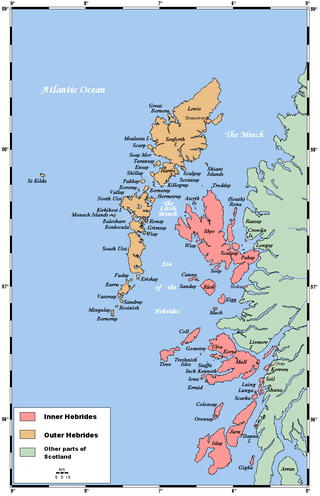
The Hebrides are an archipelago off the west coast of the Scottish mainland. The islands fall into two main groups, based on their proximity to the mainland: the Inner and Outer Hebrides.

Seamus Justin Heaney was an Irish poet, playwright and translator. He received the 1995 Nobel Prize in Literature. Among his best-known works is Death of a Naturalist (1966), his first major published volume. Heaney was and is still recognised as one of the principal contributors to poetry in Ireland during his lifetime. American poet Robert Lowell described him as "the most important Irish poet since Yeats", and many others, including the academic John Sutherland, have said that he was "the greatest poet of our age". Robert Pinsky has stated that "with his wonderful gift of eye and ear Heaney has the gift of the story-teller." Upon his death in 2013, The Independent described him as "probably the best-known poet in the world".

Sorley MacLean was a Scottish Gaelic poet, described by the Scottish Poetry Library as "one of the major Scottish poets of the modern era" because of his "mastery of his chosen medium and his engagement with the European poetic tradition and European politics". Nobel Prize Laureate Seamus Heaney credited MacLean with saving Scottish Gaelic poetry.
Raasay or the Isle of Raasay is an island between the Isle of Skye and the mainland of Scotland. It is separated from Skye by the Sound of Raasay and from Applecross by the Inner Sound. It is famous for being the birthplace of Gaelic poet Sorley MacLean, an important figure in the Scottish Renaissance.
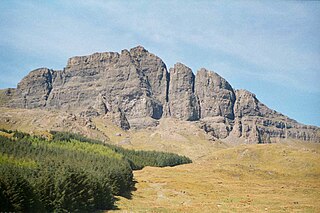
The Storr is a rocky hill on the Trotternish peninsula of the Isle of Skye in Scotland. The hill presents a steep rocky eastern face overlooking the Sound of Raasay, contrasting with gentler grassy slopes to the west.
The Scottish Renaissance was a mainly literary movement of the early to mid-20th century that can be seen as the Scottish version of modernism. It is sometimes referred to as the Scottish literary renaissance, although its influence went beyond literature into music, visual arts, and politics. The writers and artists of the Scottish Renaissance displayed a profound interest in both modern philosophy and technology, as well as incorporating folk influences, and a strong concern for the fate of Scotland's declining languages.
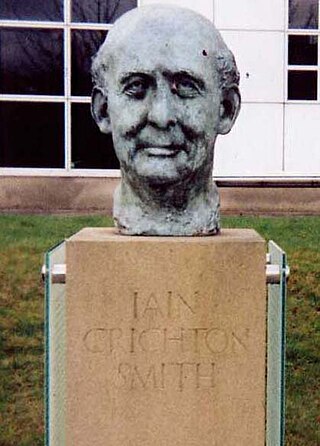
Iain Crichton Smith, was a Scottish poet and novelist, who wrote in both English and Gaelic.
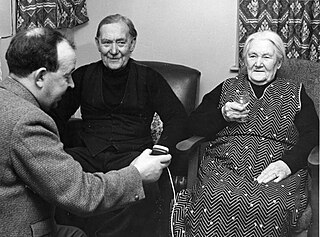
Calum Iain Maclean, was a Scottish folklorist, collector, ethnographer and author.
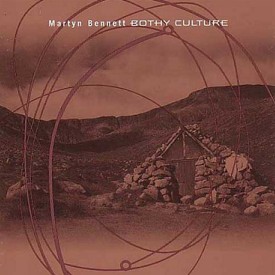
Bothy Culture is the second studio album by the Scottish Celtic fusion artist Martyn Bennett, released in January 1998 on the Rykodisc label. After winning critical acclaim for his debut album Martyn Bennett (1996), Bothy Culture builds upon that album's mixing of Scottish Celtic music with farther, international folk music styles and contemporary electronic music. The album celebrates and draws upon the music of Bennett's native Gaeldom as well as the music of Islam and Scandinavia, with Bennett finding and emotionally connecting to the similarities between the geographically dispersed styles. It mixes the styles with contemporary electronic music such as breakbeat and drum and bass.
Donnchadh MacRath, also known as Duncan MacRae of Inverinate and Donnchadh nam Pìos, was a Scottish Gaelic poet and the compiler of the Fernaig manuscript which he committed to paper using an English-influenced system of orthography.
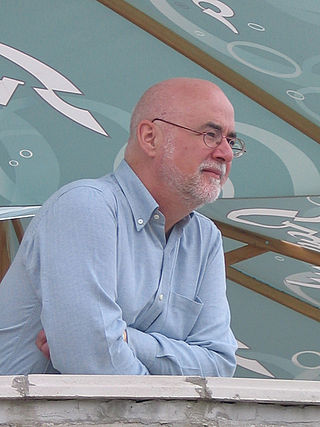
Christopher Whyte is a Scottish poet, novelist, translator and critic. He is a novelist in English, a poet in Scottish Gaelic, the translator into English of Marina Tsvetaeva, Pier Paolo Pasolini and Rainer Maria Rilke, and an innovative and controversial critic of Scottish and international literature. His work in Gaelic appears under the name Crìsdean MacIlleBhàin.
Scottish Gaelic literature refers to literary works composed in the Scottish Gaelic language, which is, like Irish and Manx, a member of the Goidelic branch of Celtic languages. Gaelic literature was also composed in Gàidhealtachd communities throughout the global Scottish diaspora where the language has been and is still spoken.

Donald Monro was a Scottish clergyman, who wrote an early and historically valuable description of the Hebrides and other Scottish islands and enjoyed the honorific title of "Dean of the Isles".
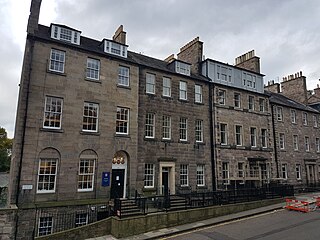
The School of Scottish Studies was founded in 1951 at the University of Edinburgh. It holds an archive of approximately 33,000 field recordings of traditional music, song and other lore, housed in George Square, Edinburgh. The collection was begun by Calum Maclean - brother of the poet, Sorley MacLean - and the poet, writer and folklorist, Hamish Henderson, both of whom collaborated with American folklorist Alan Lomax, who is credited as being a catalyst and inspiration for the work of the school.

That part of the United Kingdom called Northern Ireland was created in 1922, with the partition of the island of Ireland. The majority of the population of Northern Ireland wanted to remain within the United Kingdom. Most of these were the Protestant descendants of settlers from Great Britain.
Gairm was a Scottish Gaelic quarterly magazine founded in 1951 by Derick Thomson, and Finlay J. MacDonald. Its first issue was published in Autumn 1952. MacDonald served as an editor until 1964; Thomson remained present for decades until it ceased publication in 2004, producing just over 200 issues in total. According to Alan Campbell, the magazine was a "one-man show;" he explained that Thomson "sustained something very valuable for a long period of time." Although it had a relatively low circulation, it was influential on Gaelic literature as it was the longest-running Gaelic literary magazine of the 20th century, in circulation for more than twice as long as its predecessor, Guth na Bliadhna. Gairm attempted to encompass a variety of perspectives and themes, and "disseminated a lot of work that we weren't aware of" in the words of Martin MacDonald. As well as being familiar to most literate Gaels, the magazine attracted almost all influential Gaelic writers who were active, including Sorley MacLean, Iain Crichton Smith, George Campbell Hay, and Dòmhnall MacAmhlaigh.

MV Hallaig is a pioneering Diesel Electric Hybrid ferry built for the Caledonian MacBrayne service between Skye and Raasay.

Poetry of Scotland includes all forms of verse written in Brythonic, Latin, Scottish Gaelic, Scots, French, English and Esperanto and any language in which poetry has been written within the boundaries of modern Scotland, or by Scottish people.

Dàin do Eimhir is a sequence of sixty poems written in Scottish Gaelic by Sorley MacLean. Considered MacLean's masterpiece, the poems deal with intertwining themes of romantic love, landscape, history, and the Spanish Civil War, and are among the most important works ever written in Scottish Gaelic literature.
George Rainy was a Scottish merchant, slave owner and land owner. In the early 1800s, Rainy became involved in sugar plantations in the Caribbean which were worked by African slaves in Demerara in Guiana. Due to extensive family connections he eventually became a full partner in Sandbach, Tinne & Company, a Scottish-run company which dealt in trade in the same field and was prominent in British Guiana, to the extent that the men who ran it were called the "Rothschilds of Demerara" on account of their wealth and influence. After the abolition of the Atlantic slave trade in the British Empire in the 1830s, Rainy became involved in the Highland Clearances. Using monies from the payout to former slave-owners following the Slavery Abolition Act 1833, he purchased the islands of Raasay, Rona and Fladda from Clan MacLeod in 1846: he removed from the land twelve townships of ninety-four Gaelic Highlander families to make way for sheep farming, causing mass depopulation and displacement on the islands.
















